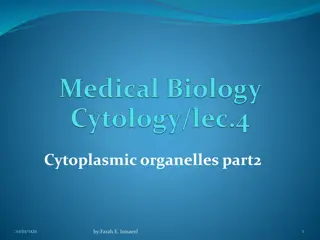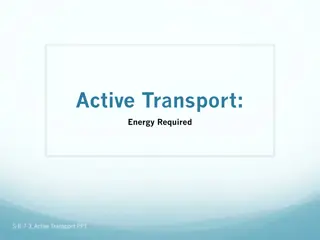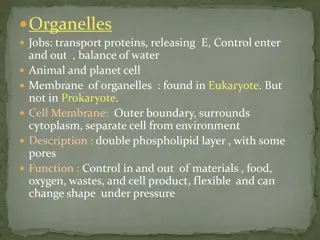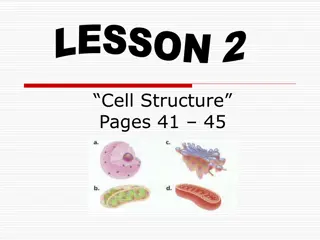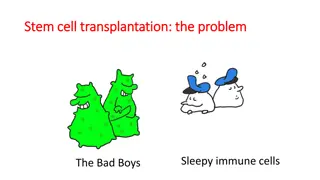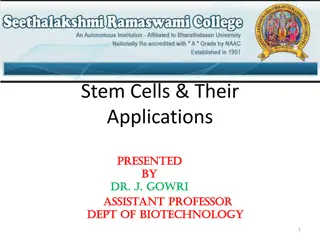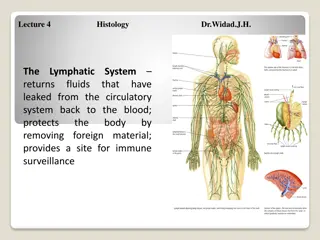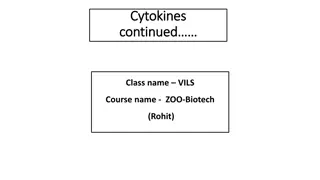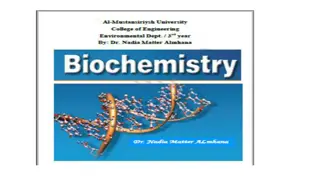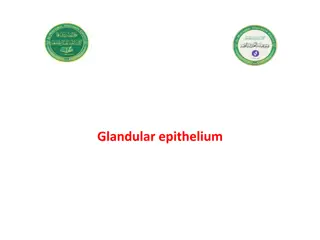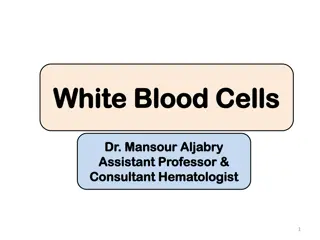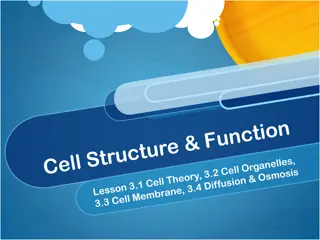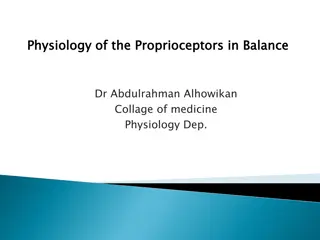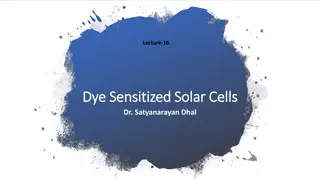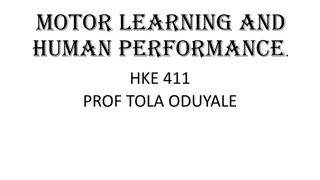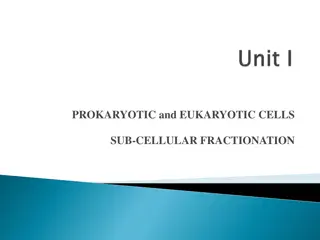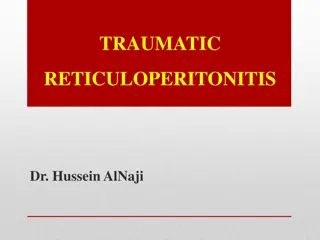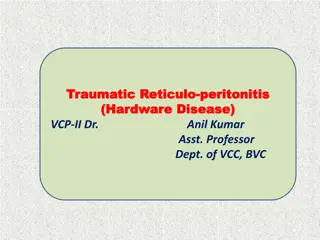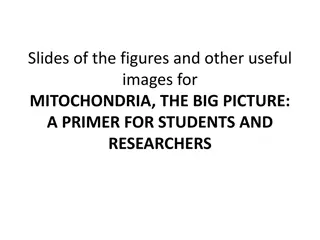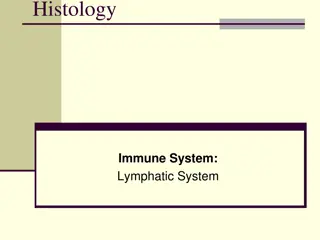Understanding the Endoplasmic Reticulum and Golgi Complex in Cells
The endoplasmic reticulum (ER) is a vital component in the cell, comprising rough and smooth regions with distinct functions. It plays a crucial role in protein synthesis, lipid metabolism, and detoxification processes. The ER is interconnected with the Golgi apparatus and forms a continuous network throughout the cell. Understanding the structure and functions of the ER provides insights into cellular processes and organelle interactions.
Download Presentation

Please find below an Image/Link to download the presentation.
The content on the website is provided AS IS for your information and personal use only. It may not be sold, licensed, or shared on other websites without obtaining consent from the author. Download presentation by click this link. If you encounter any issues during the download, it is possible that the publisher has removed the file from their server.
E N D
Presentation Transcript
Endoplasmic Reticulum AND Golgi complex
Rough ER CELL STRUCTURE
Endoplasmic Reticulum Firstly observed by Porter, Claude and Fullam in 1945 , cultured cells Found in all animals and plants except mammalian RBCs Absent in prokaryotes Well developed in liver and pancreatic cells Known as Ergastroplasm, basophilic structure. 3 Types 1. Cisternae/Lamellae- Long, flattened, unbranched, parallel bundles, Uniform in width, 40-60 micrometer thick. 2. Vesicles- 25-500 micrometer , round, irregular, observed by Weiss1953, more in liver pancreas, engaged in protein synthesis. 3. Tubules: smooth walled, branched, more in cell which synthesis steroid.
Endoplasmic reticulum (ER). The endoplasmic reticulum is a network of tubules and flattened sacs that serve a variety of functions in the cell. There are two regions of the ER that differ in both structure and function. One region is called rough ER because it has ribosomes attached to the cytoplasm side of the membrane. The other region is called smooth ER because it lacks attached ribosomes. Typically, the smooth ER is a tubule network and the rough ER is a series of flattened sacs.
The space inside of the ER is called the lumen. The ER is very extensive extending from the cell membrane through the cytoplasm and forming a continuous connection with the nuclear envelope. Since the ER is connected with the nuclear envelope, the lumen of the ER and the space inside the nuclear envelope are part of the same compartment.
While the function of the nucleus to act as the cell brain, the ER functions as a packaging system. It does not work alone. The ER works closely with the Golgi apparatus, ribosome's, RNA, mRNA, and tRNA. It creates a network of membranes found through the whole cell. The ER may also look different from cell to cell, depending on the cell's function
Rough and Smooth ER: As you learn more about cells you will discover two types of ER. There are rough ER and smooth ER. They both have the same types of membranes but they have different shapes and rough ER has ribosome's attached. Rough ER looks like sheets of bumpy membranes while smooth ER looks more like tubes. Sometimes the ER looks like a flat balloon. Sacs of the ER called cisternae store the complex molecules.
Smooth ER has its purpose in the cell. It acts as a storage organelle. It is important in the creation and storage of steroids. It also stores ions in solution that the cell may need at a later time. Steroids are a type of ringed organic molecule used for many purposes in an organism. They are not always about building muscle mass like a weight lifter. The ion storage is important because sometimes a cell needs ions fast. It might not want to search the environment for ions, so it is easier to have them stored in a pack for easy use.
Rough ER was mentioned in the section on ribosomes. They are very important in the synthesis and packaging of proteins. Some of those proteins might be used in the cell and some are sent out. The ribosomes are attached to the membrane of the ER. The rough ER pinches off a vesicle. That vesicle, a small membrane bubble, can move to the cell membrane or the Golgi apparatus.
Function of endoplasmic reticulum To carry essential substances from one part of the cell to another and provide a little rigidity to the cell. Basically, the modification of proteins and their shipping to the various parts of the cell and outside the cell in the rough ER. Smooth ER has to do with the modification of lipids.
Rough endoplasmic reticulum functions as; -protein translocation, folding and transport of protein; Smooth Endoplasmic Reticulum functions as; -synthesis of lipid -metabolism of carbohydrates; -detoxification function; -major storage and released site of inter cellular calcium ions.
FUNCTIONS OF ER: 1. Mechanical support 2. Protein synthesis 3. Glycogen synthesis and storage(SER) 4. Enzyme activities 5. Lipid synthesis and storage 6. Detoxification 7. Formation of microbodies 8. Synthesis of cholesterol and steroid hormone (progesterone & testosterone) 9. Formation of nuclear membrane 10. Circulation and exchange of material 11. Role of muscle contraction
Golgi Apparatus or Golgi Body
2. The Golgi Apparatus Camillo Golgi Italian physician1898 discovered GC Also called Golgi body or Golgi complex and found universally in both plant and animal cells, It is typically comprised of a series of five to eight cup-shaped, membrane- covered sacs called cisternae that look something like a stack of deflated balloons. In some unicellular flagellates, however, as many as 60 cisternae may combine to make up the Golgi apparatus. Similarly, the number of Golgi bodies in a cell varies according to its function. Animal cells generally contain between 10-20 Golgi stacks per cell, which are linked into a single complex by tubular connections between cisternae. This complex is usually located close to the cell nucleus.
Drawing shows an actual interface between the ER and the Golgi complex
STRUCTURE G.C.is morphologically similar in both plants and animal cells. The electron microscopic str. of GC was observed by Dalton and Felix in 1954 in the epidermis of rat It is made up of 3 components 1) Flattened sacs/ cisternae 2) small vesicles and tubules 3) large vacuoles
The modifications to molecules that take place in the Golgi apparatus occur in an orderly fashion. Each Golgi stack has two distinct ends, or faces. The cis face of a Golgi stack is the end of the organelle where substances enter from the endoplasmic reticulum for processing, while the trans face is where they exit in the form of smaller detached vesicles. Consequently, the cis face is found near the endoplasmic reticulum, from whence most of the material it receives comes, and the trans face is positioned near the plasma membrane of the cell, to where many of the substances it modifies are shipped. The chemical make-up of each face is different and the enzymes contained in the lumens (inner open spaces) of the cisternae between the faces are distinctive.
FUNCTIONS OF Golgi complex: Formation of acrosome during spermatogenesis Role of secretion Role in cell plate formation Storage of lipids and proteins Formation of lysosomes Transport of materials from nucleus to cytoplasm Transport of macromolecules: intercellular and intra cellular Pigment formation : Melanin Milk and protein droplet formation (In mammary gland of mice)
The Golgi apparatus is often considered the distribution and shipping department for the cell's chemical products. It modifies proteins and lipids (fats) that have been built in the endoplasmic reticulum and prepares them for export outside of the cell or for transport to other locations in the cell. . The vesicles fuse with the Golgi membranes and release their internally stored molecules into the organelle. Once inside, the compounds are further processed by the Golgi apparatus, which adds molecules or chops tiny pieces off the ends. When completed, the product is extruded from the GA in a vesicle and directed to its final destination inside or outside the cell. The exported products are secretions of proteins or glycoproteins that are part of the cell's function in the organism. Other products are returned to the endoplasmic reticulum or may undergo maturation to become lysosomes
Proteins, carbohydrates, phospholipids, and other molecules formed in the endoplasmic reticulum are transported to the Golgi apparatus to be biochemically modified during their transition from the cis to the trans poles of the complex. Enzymes present in the Golgi lumen modify the carbohydrate (or sugar) portion of glycoproteins by adding or subtracting individual sugar monomers. In addition, the Golgi apparatus manufactures a variety of macromolecules on its own, including a variety of polysaccharides. The Golgi complex in plant cells produces pectins and other polysaccharides specifically needed by for plant structure and metabolism. The products exported by the Golgi apparatus through the trans face eventually fuse with the plasma membrane of the cell



